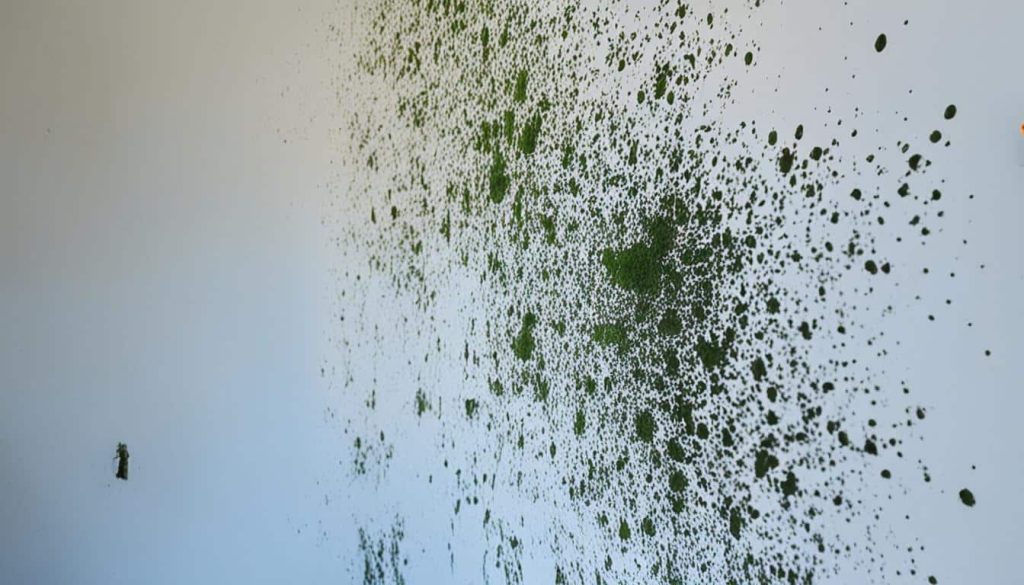Water leaks and spills, though often unplanned, can pose significant risks to your indoor environment if not managed promptly and effectively. Addressing these issues with urgency is crucial to preventing mold growth and maintaining a healthy living space. Here’s a comprehensive moisture and mold prevention tips on how to manage indoor water issues and mitigate potential damage:
Array of Solutions, a trusted name in mold removal in Greenville South Carolina since 2007, stands ready to tackle your mold woes. With our expert mold inspection Greenville services and EPA-Registered credentials, we’re equipped to detect, remove, and prevent mold growth in your home or business.
Table of Contents
Moisture and Mold Prevention Tips
The first line of defense against mold and water damage is to act quickly when water leaks or spills occur indoors. Time is of the essence. For effective mold prevention, ensure that wet or damp materials are dried within 24 to 48 hours after the incident. Mold thrives in moist environments, so prompt action in drying affected areas is critical. This swift response can prevent the growth of mold, which can lead to further damage and health issues.
Maintain and Repair Roof Gutters Regularly
Roof gutters play a vital role in directing rainwater away from your home’s foundation. To ensure they function effectively, regular maintenance and repairs are essential. Clogged or damaged gutters can cause water to overflow and potentially damage your roof, walls, and foundation. Regularly clean your gutters to remove leaves, debris, and other obstructions that can impede water flow. Inspect and repair any damage promptly to prevent water from causing structural problems.
Ensure Proper Ground Sloping
The grading around your home’s foundation is another critical factor in managing water runoff. The ground should slope away from the foundation to prevent water from collecting or entering around it. Proper grading helps direct water away from the foundation, reducing the risk of water damage and basement flooding. If you notice any areas where the ground slopes toward your home, regrade the soil or install drainage solutions to correct the issue.
Keep Air Conditioning Drip Pans and Drain Lines Clean
Air conditioning systems generate condensation, which is collected in drip pans and directed away through drain lines. To ensure your system operates efficiently and doesn’t contribute to water damage, regularly clean the drip pans and ensure the drain lines are unobstructed and flowing properly. Blockages in the drain lines can cause water to back up and potentially leak into your living spaces. Regular maintenance will help your air conditioning system function correctly and prevent water-related issues.
Manage Indoor Humidity Levels
Controlling indoor humidity is another crucial step in preventing mold growth and water damage. Ideally, indoor humidity levels should be kept below 60 percent, with a target range between 30 and 50 percent relative humidity. High humidity can contribute to condensation on windows, walls, and pipes, which can lead to mold growth. Invest in a moisture or humidity meter—a small, inexpensive tool available at most hardware stores—to monitor indoor humidity levels. By maintaining proper humidity levels, you can reduce the risk of moisture-related problems.
Address Condensation and Moisture Promptly
Condensation on windows, walls, or pipes is a sign of high humidity and should be addressed promptly. If you notice moisture collecting on these surfaces, take immediate action to dry them and address the underlying moisture source. High levels of indoor humidity can lead to more severe issues if not managed properly. Use dehumidifiers, increase ventilation, or make adjustments to your heating and cooling systems to help reduce indoor humidity and prevent condensation.

Conclusion
By following these essential steps—acting quickly to address leaks and spills, maintaining roof gutters, ensuring proper ground sloping, keeping air conditioning systems well-maintained, managing indoor humidity, and promptly addressing condensation—you can significantly reduce the risk of mold growth and water damage in your home. Taking proactive measures will not only protect your property but also contribute to a healthier living environment. Regular maintenance and vigilance are key to preserving your home’s integrity and ensuring a safe, comfortable space for you and your family.

